Research Assignment
Research reflections:
I have started to think about what I will scan for this project. After watching Neri Oxman’s Ted Talk and having some conversations about it, I have decided to use a scan of myself in a meditation pose for my final project. It reflects my state of mind these days- being in a thoughtful space- and brings the organic together with computer technology and back to organic materials again via handmade and digital processes. In this way I will be exploring the relationship between nature and technology at this point of intersection.
For my research I am taking you to Yorkshire, UK where I love to visit The Yorkshire Sculpture Park near Wakefield, Yorkshire whenever I am visiting my family nearby. The exhibits are both indoors and outdoors, some are visiting and others are part of a permanent collection. So it’s always a treat to go and see what’s new and also visit old favourites.
Artists- 1 Erwin Wurm
These photos are from a visit to The Yorkshire Sculpture Park in October 2023. Edwin Wurm was featured in the gallery and adjoining outdoor space. I was especially impressed by the reshaping of the Mercedes truck to occupy space in a different way. Offering curves to the structure creates a softening and an excitement to the metal structure. It really engages the imagination- wondering what might happen if the truck drives away- perhaps picturing a loop-the-loop track. I love the playfulness of his sculptures and the way they invite interaction.
In his quotation Wurm says: ‘Art is quite simply part of everyday life for me. Art is also my everyday life. That means when you let something become everyday, it loses its special quality and it’s not a luxury or something extraordinary anymore. But that doesn’t mean artwork itself no longer has anything special or extraordinary about it, only the way we deal with it. That means that it becomes something I spend time on every day, and that is perfectly possible.’

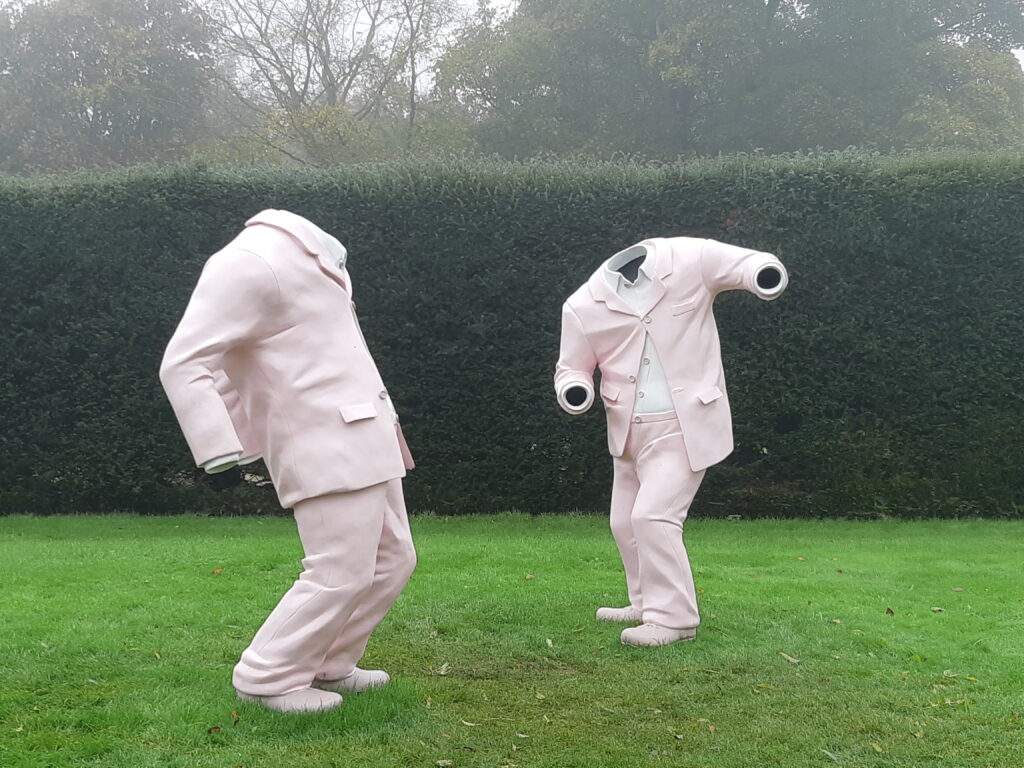
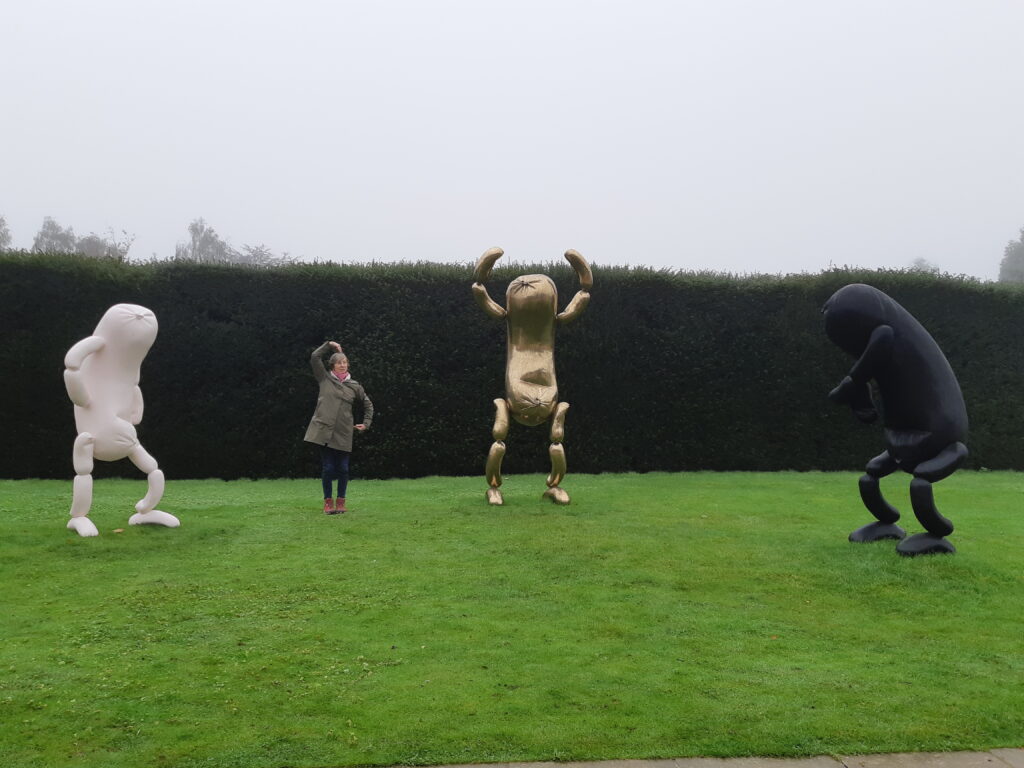
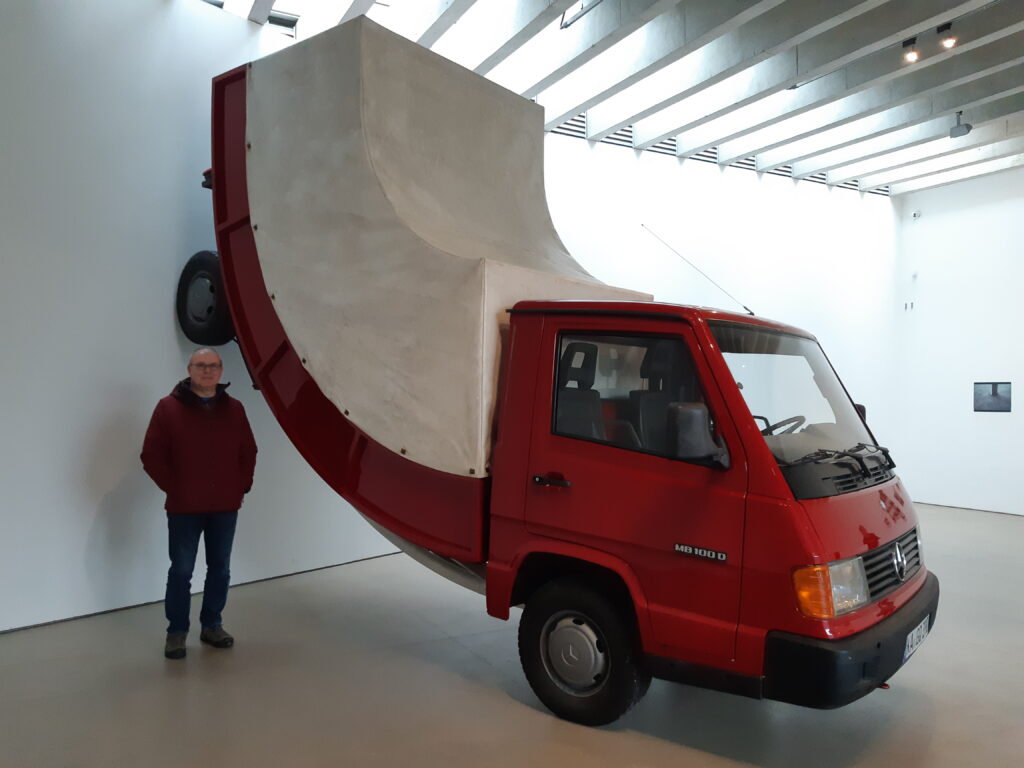
https://ysp.org.uk/whats-on/exhibitions/past-exhibitions/erwin-wurm
2. Peter Randall-Page ‘Mind Walk’
This continuous line engraving/sculpture explores the way that a line can traverse a 3-D object. Something that speaks to me is that I am reminded of the structure of a brain, although I can see it’s not a realistic interpretation but more of a suggestive one. The rock is enormous- probably 1.5 metres by 1m and the weight of it is evident without even trying to move is. I loved this sculpture as I was able to touch it…my hands becoming part of the natural erosion process. Being outside, exposed to the elements, nature will continue to shape this beautiful form for thousands or millions of years to come. That is quite amazing and plays with concepts of time and the human place on the timeline of history. This is a testament to the ability and power of art to bring us into reflective and philosophical spaces.
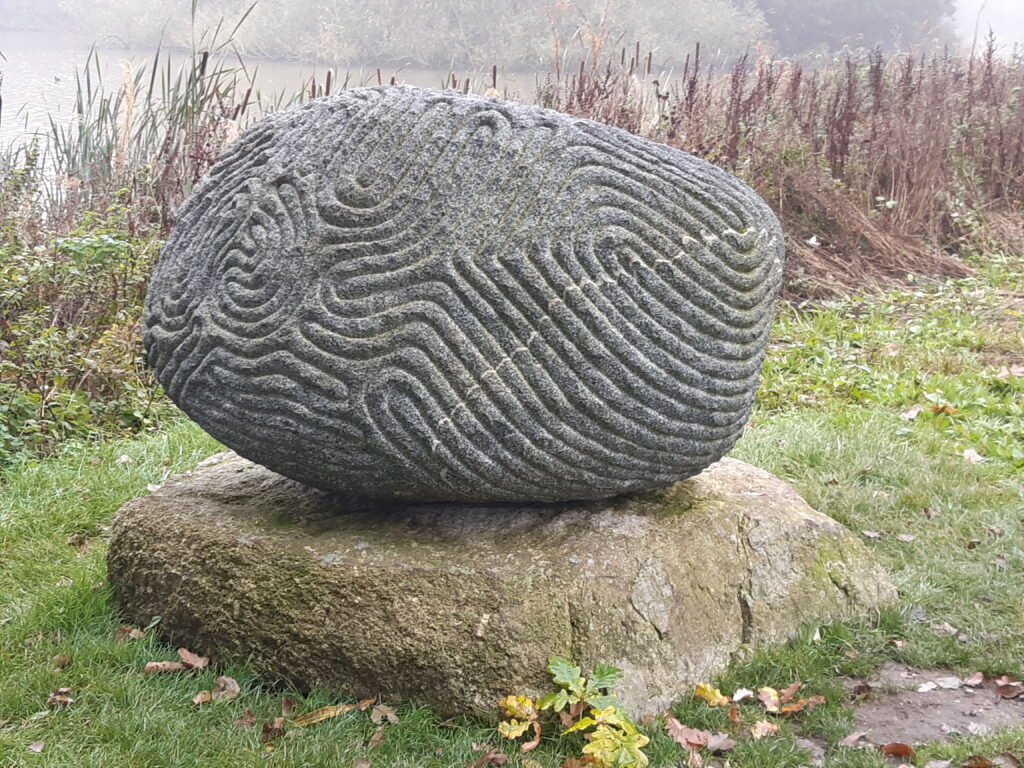
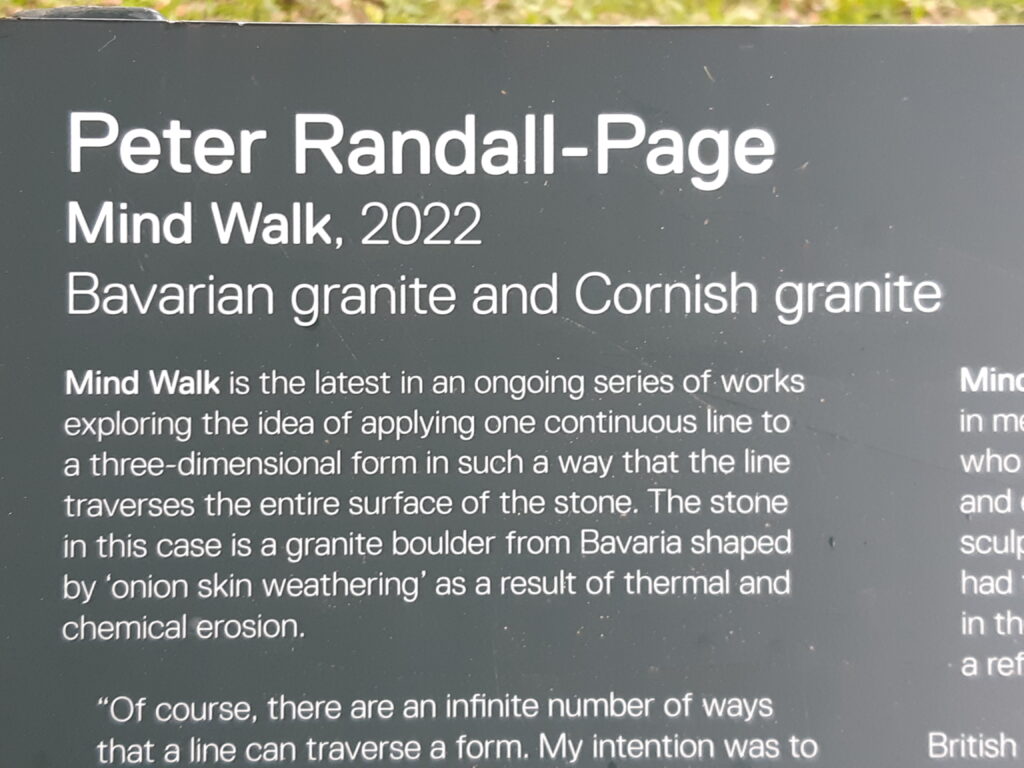
https://ysp.org.uk/art-outdoors/peter-randall-page-mind-walk
3. Damian Hurst- it was an eerie experience walking towards these giant sculptures on a misty day, not realising quite how tall they are and finding them just getting bigger and bigger as I walked across the open field towards them. Suddenly I realised that the specks were people standing at the base. Right away I can say that one significant aspect here is the effect that scaling a familiar form up or down can have on the onlooker. In this case it was scaling up and the result was jaw-dropping and thought provoking. Within this experience was also the stark contrast of the mother’s skull being revealed next to the baby within her uterus- like a scientific dissection and also a story of life and death existing within each of us.
Hirst cast this 10m high sculpture- The Virgin Mother- in bronze and then painted it to look like plastic. The finish is reminiscent of those models of body parts we see at the doctor or physio’s office. It was interesting to walk around and see only the left side (fully covered) followed by the right side (peeled back)- almost like the childhood experiment of looking at something with one eye while covering the other and then switching to the other eye.
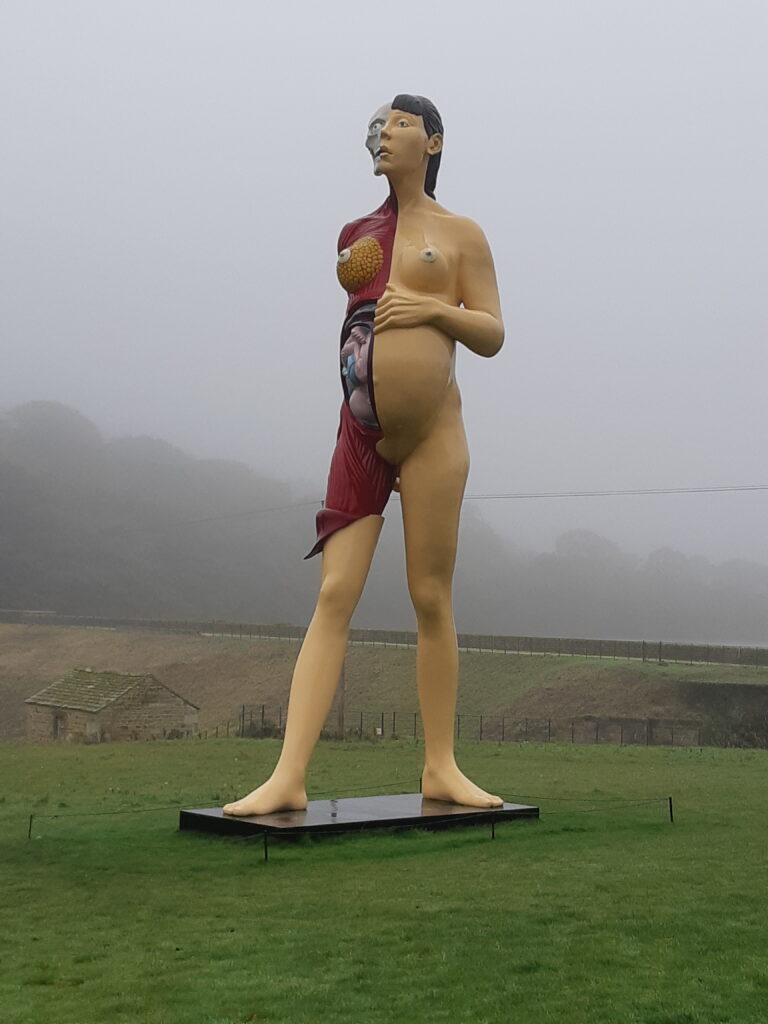
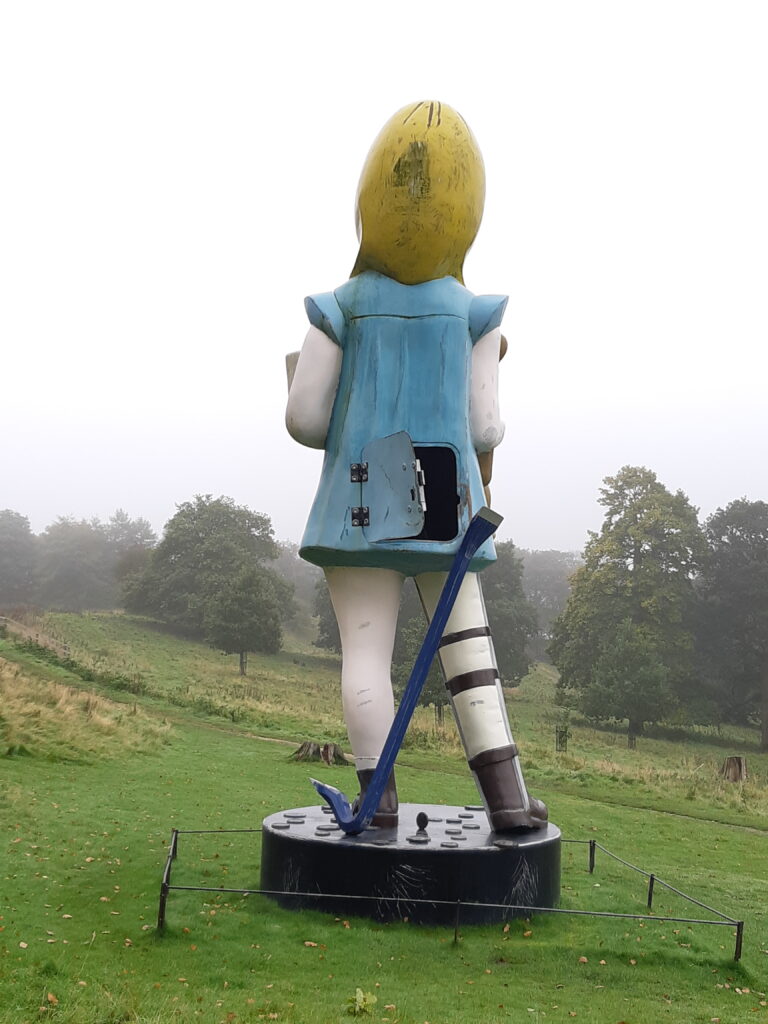
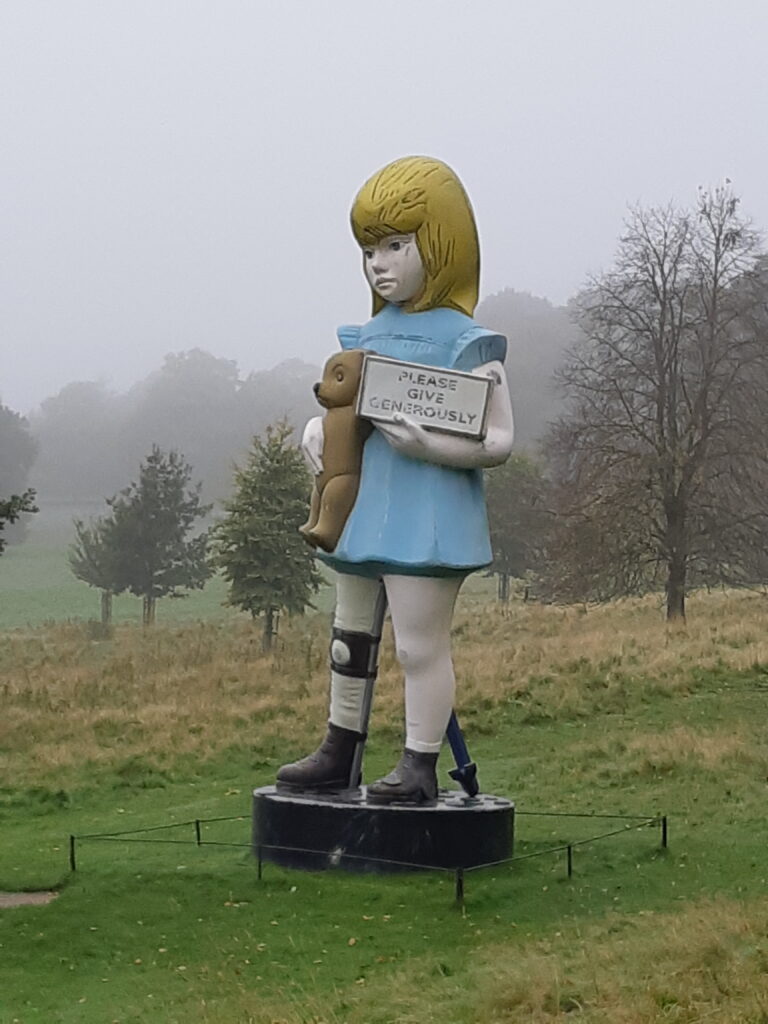
Charity, Damian Hirst, Bronze, 7m tall
This sculpture had a nostalgic connection for me as it is based on collection boxes that were very common on British high streets in my youth. Though it isn’t a warm and fuzzy nostalgia as I see now how disrespectful this depiction is to people who are differently able. In the write up it is said that Hirst was questioning not only the outdated ways of depicting disability but also how we seek charity. It makes me think of my relationship with charity and how I see the opportunities I have to offer money or help as a natural part of sharing resources and not something to be announced or forced. Again this sculpture is in bronze and painted to look like the roughly painted collection boxes of their day (possibly cast iron).
https://ysp.org.uk/art-outdoors/damien-hirst-the-virgin-mother
https://ysp.org.uk/art-outdoors/damien-hirst-charity
Having revisited these 3D works of art, I am inspired to consider the use of materials- whether to change the appearance, for example. It has also set me thinking about scale and how going smaller or bigger can have an impact on the viewer. Finally, all of these artists remind me of the importance of our relationship with place and interplay of art with science, technology and nature/ the organic world.
